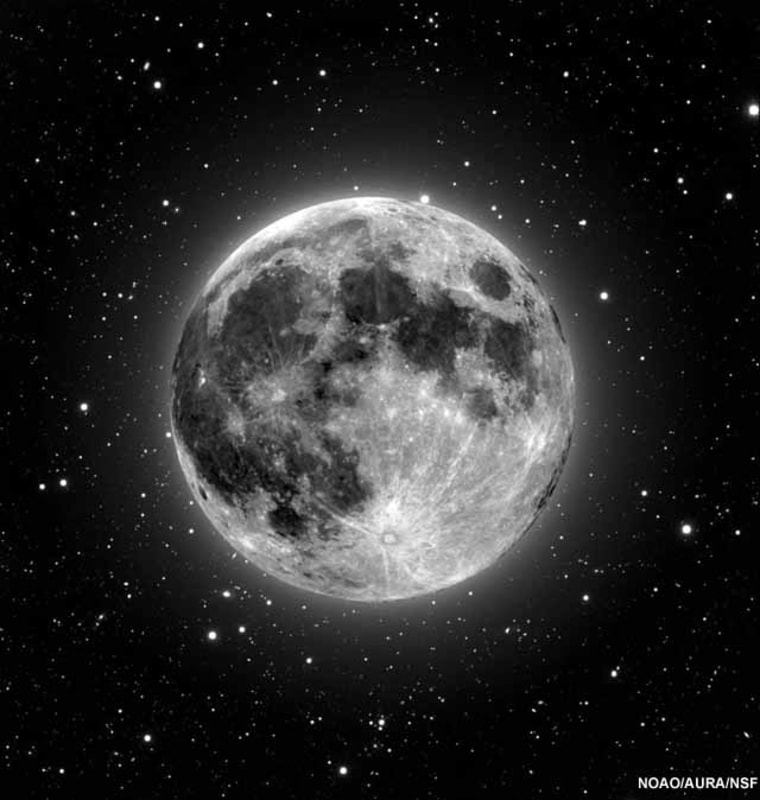Friday's full moon was the biggest and brightest full moon of the year, offering those with clear skies an opportunity to identify easy-to-see features on the moon.
This being the first full moon of 2010, it is also known as the wolf moon, a moniker dating back to Native American culture and the notion that hungry wolves howled at the full moon on cold winter nights. Each month brings another full moon name.
But why was this moon be bigger than others? Here's how the moon works:
The moon is, on average, 238,855 miles (384,400 km) from Earth. The moon's orbit around Earth — which causes it to go through all its phases once every 29.5 days — is not a perfect circle, but rather an ellipse. One side of the orbit is 31,070 miles (50,000 km) closer than the other.
So in each orbit, the moon reaches this closest point to us, called perigee. Once or twice a year, perigee coincides with a full moon, as it will tonight, making the moon bigger and brighter than any other full moons during the year.
On Jan. 29, the moon was about 14 percent wider and 30 percent brighter than lesser full moons of the year, according to Spaceweather.com.
As a bonus, Mars was right next to the moon on Friday. Skywatchers may have seen the reddish, star-like object.
Full moon craziness
Many people think full moons cause strange behavior among animals and even humans. In fact several studies over the years have tried to tie lunar phases to births, heart attacks, deaths, suicides, violence, psychiatric hospital admissions and epileptic seizures, and more. Connections have been inclusive or nonexistent.
The moon does have some odd effects on our planet, and there are oodles of other amazing moon facts and misconceptions:
- A full moon at perigee also brings higher ocean tides. This tug of the moon on Earth also creates tides in the planet's crust, not just in the oceans.
- Beaches are more polluted during full moon, owing to the higher tides.
- In reality, there's no such thing as a full moon. The full moon occurs when the sun, Earth and the moon are all lined up, almost. If they're perfectly aligned, Earth casts a shadow on the moon and there's a total lunar eclipse. So during what we call a full moon, the moon's face is actually slightly less than 100 percent illuminated.
- The moon is moving away as you read this, by about 1.6 inches (4 cm) a year.
.
